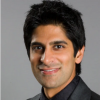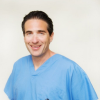- Airdrie
- Calgary
- Cochrane
- Edmonton
- Fort McMurray
- Fort Saskatchewan
- Grande Prairie
- Leduc
- Lethbridge
- Lloydminster
- Medicine Hat
- Okotoks
- Red Deer
- Spruce Grove
- Other City
- Abbotsford
- Burnaby
- Campbell River
- Chilliwack
- Courtenay
- Kamloops
- Kelowna
- Mission
- Nanaimo
- Parksville
- Penticton
- Prince George
- Richmond
- Surrey
- Vancouver
- Vernon
- Victoria
- White Rock
- Other City
- Barrie
- Belleville
- Bolton
- Bowmanville
- Bradford
- Brantford
- Chatham
- Cornwall
- Georgetown
- Guelph
- Hamilton
- Innisfil
- Kanata
- Keswick
- Kingston
- Kitchener
- Leamington
- London
- Midland
- Milton
- Mississauga
- North Bay
- Oakville
- Orangeville
- Orillia
- Oshawa
- Ottawa
- Peterborough
- Sarnia
- Sault Ste. Marie
- Scarborough
- St. Catharines
- St. Thomas
- Stouffville
- Stratford
- Sudbury
- Thunder Bay
- Timmins
- Toronto
- Welland
- Windsor
- Woodstock
- Other City
Premier Practitioners
Otolaryngologists | Page 4
An otolaryngologist is a medical doctor who specializes in diseases and disorders of the ear, nose, and throat. An otolaryngologist is often referred to as an ear, nose and throat doctor. He or she sees patients with a range of conditions that affect the ears, sinuses, pharynx, larynx and other structures of the head and neck. You may see an otolaryngologist for chronic ear infections, hearing loss, sinusitis, cochlear implants and more.
Balloon sinuplasty is mainly a use for treating chronic sinusitis, and the whole idea is to dilate the little drainage pathways, the ostia, without actually doing any cutting to the sinuses.
The American Academy of Otolaryngology–Head and Neck Surgery (AAO-HNS) is one of the world’s largest organizations representing specialists who treat the ears, nose, throat, and related structures of the head and neck.
So this is the latest technique. It was first introduced in North America in about 2005. Balloon sinuplasty can actually be done in the office, with the patient awake, so you don’t need the OR to do it. It’s mainly used for patients with a single-sinus disease, so you don’t really have to open all the sinuses, if you just have one sinus that’s causing a problem.
The Canadian Otolaryngological Society, as it was know then, was founded by three doctors, George Hodge, William J. McNally and Jules Brahy. Their aim was to create a charter that would further the training of members of the specialty and allow them to “work in an atmosphere of mutual understanding and cooperation.
You can actually thread a wire or a balloon into the opening of that particular sinus, enlarge the balloon for ten seconds, and then pull it out, and you’ve got a nice opening. Then you can actually flush that sinus out while you’re doing that. You’ve actually got the treatment done with the patient sitting in your office and going home with their sinus issue resolved without having any surgery done in an operating room. Once the ostia are opened, the surgery is done.
Normally, sound enters the ear canal and causes the eardrum to vibrate. These vibrations are then transferred to the three tiny bones in the middle ear called the ossicles: the malleus, incus, and stapes. The ossicles amplify and transmit the vibrations to the inner ear.
In the inner ear, the vibrations reach the cochlea, a fluid-filled structure. The movement of the fluid in the cochlea causes hair cells, which are sensory cells, to bend. This bending action triggers the conversion of mechanical vibrations into electrical signals.
The electrical signals generated by the hair cells stimulate the auditory nerve fibers located in the cochlea. These nerve fibers transmit the signals to the brain via the auditory pathway. The brain then processes these signals and interprets them as sound.
In otosclerosis, the abnormal bone growth affects the stapes bone, making it less mobile or fixed. This can disrupt the transmission of sound vibrations to the inner ear, leading to hearing loss.
It's important to note that this is a simplified explanation, and the auditory system is a complex and intricate mechanism. If you suspect you have otosclerosis or any other hearing-related concerns, it's advisable to consult with a medical professional for an accurate diagnosis and appropriate treatment. Physicians could also be memebrs of the the American Academy of Otolaryngology-Head and Neck Surgery.
Useful Resources
Canada
Royal College of Physicians and Surgeons of Canada
Northwest Territories
Nunavut
United States of America
National Provider Identifier (NPI)
Australia
Australian Health Practitioner Regulation Agency
New Zealand
Medical Council of New Zealand




